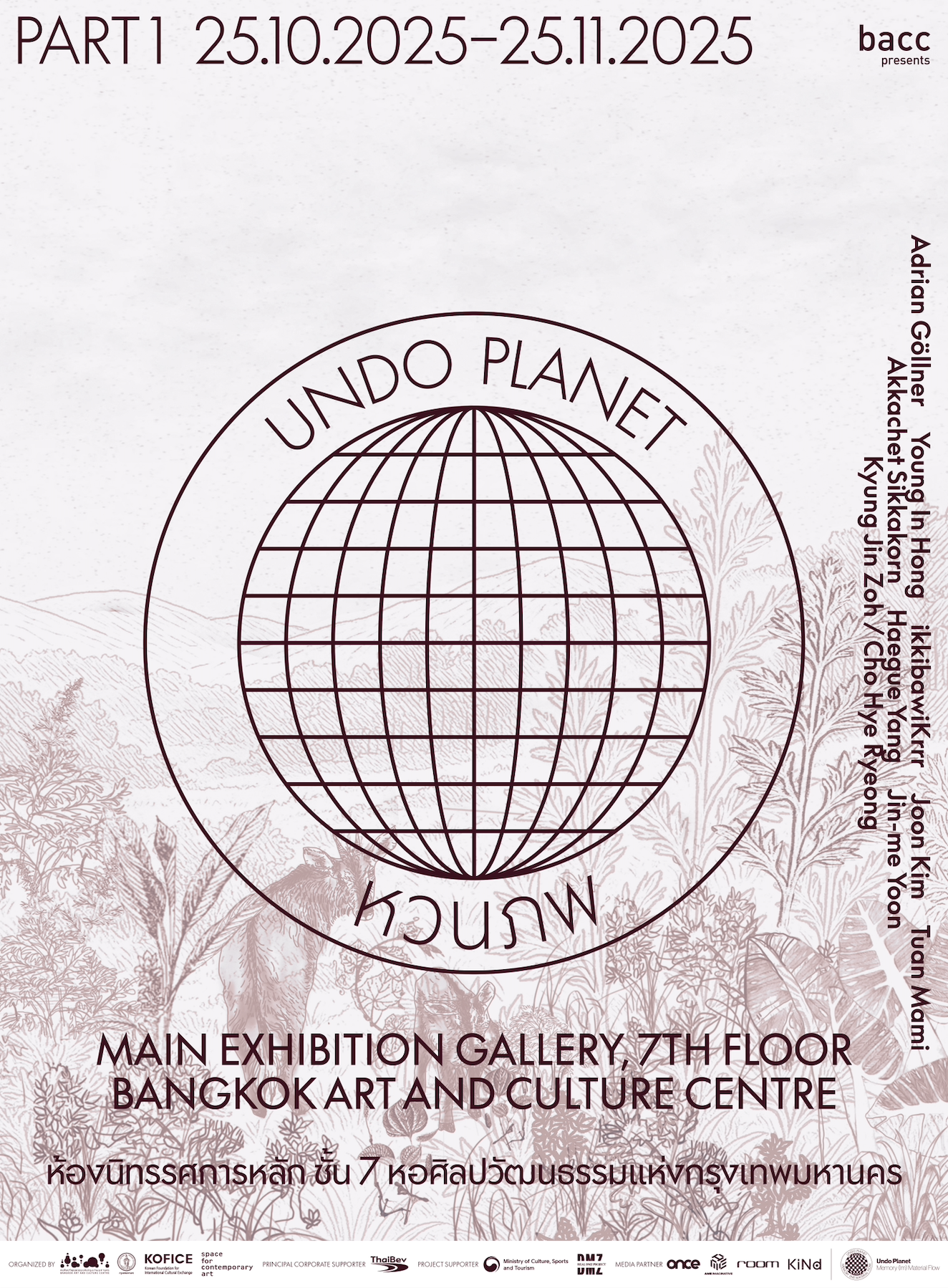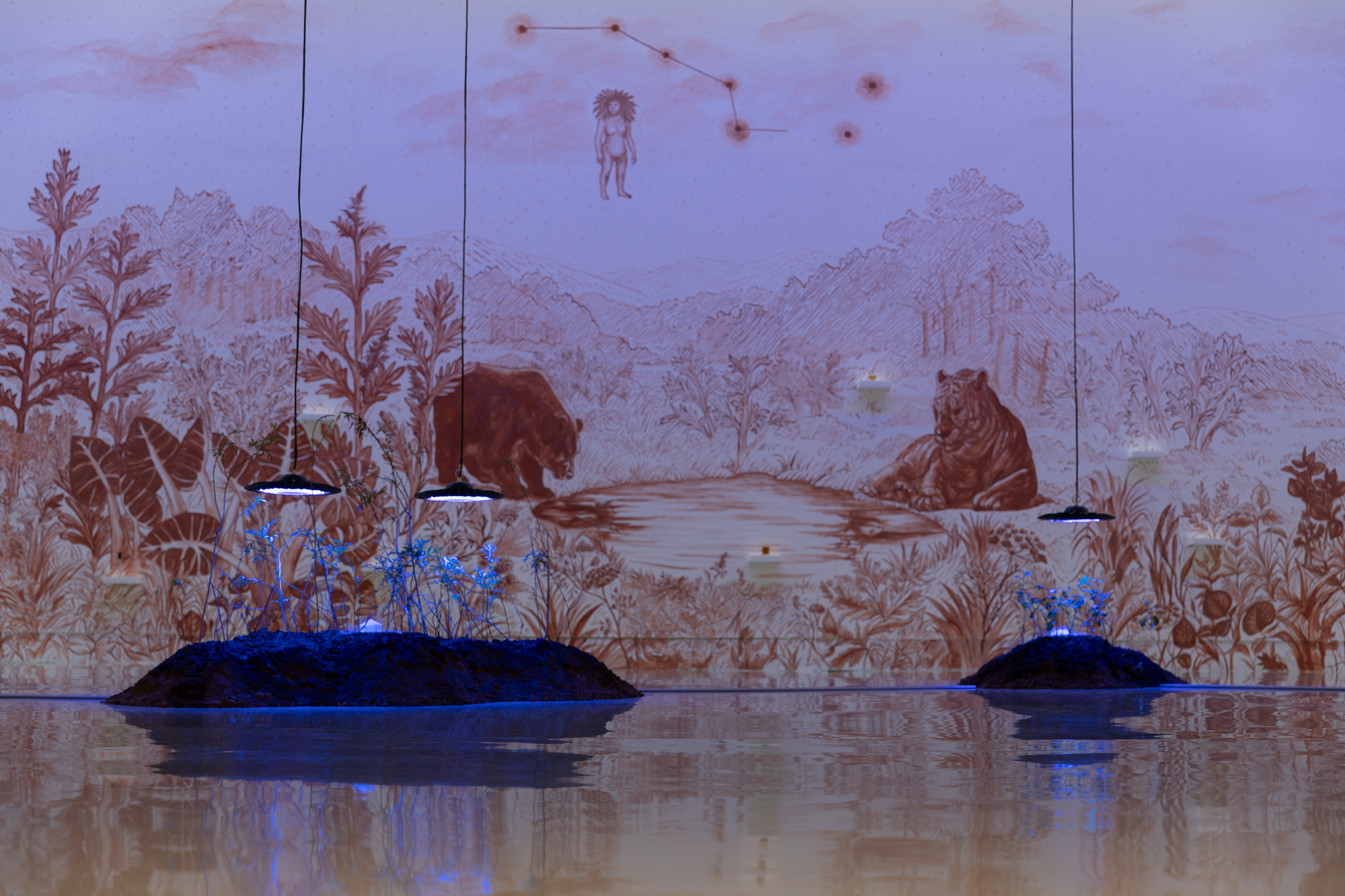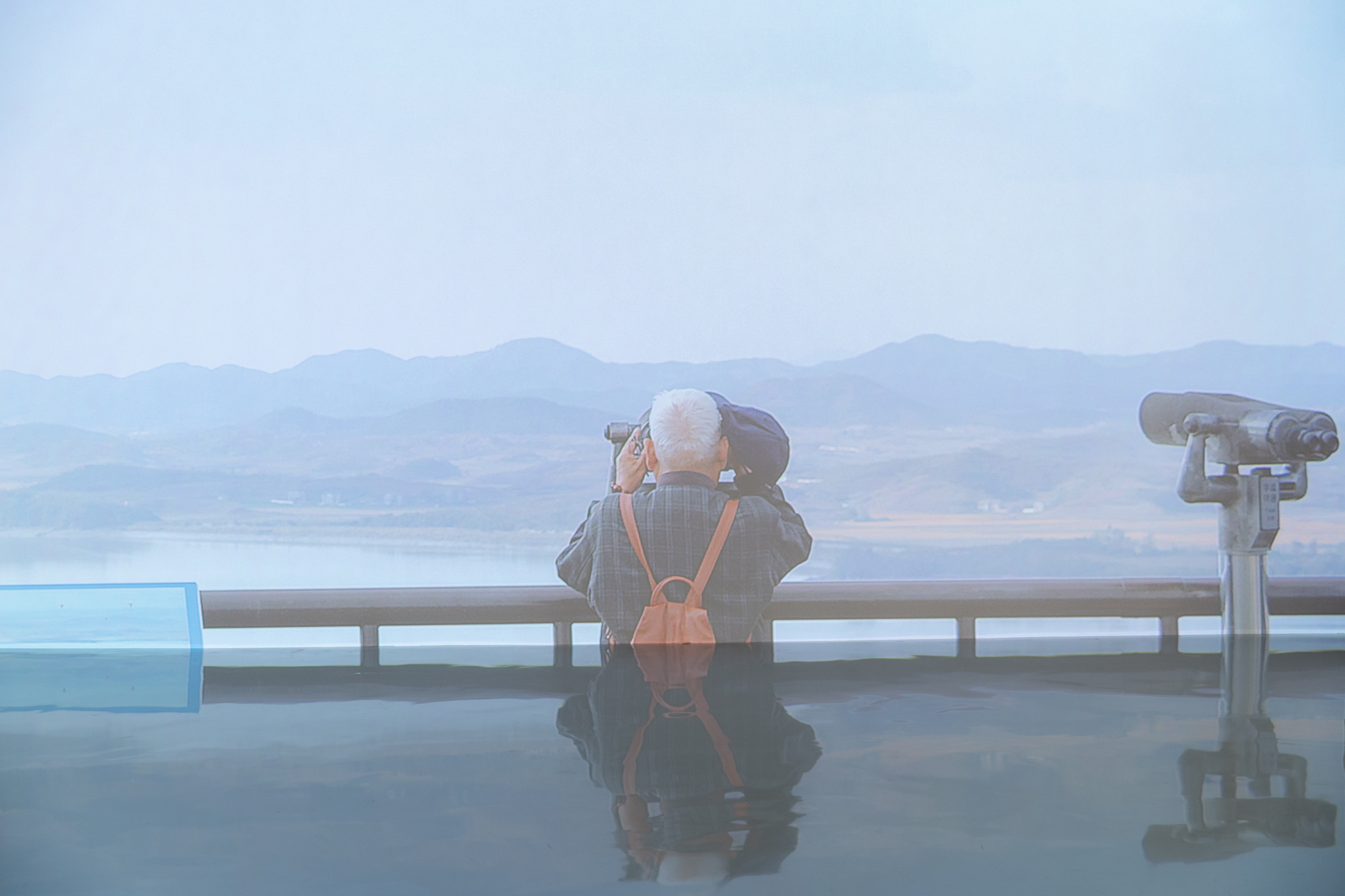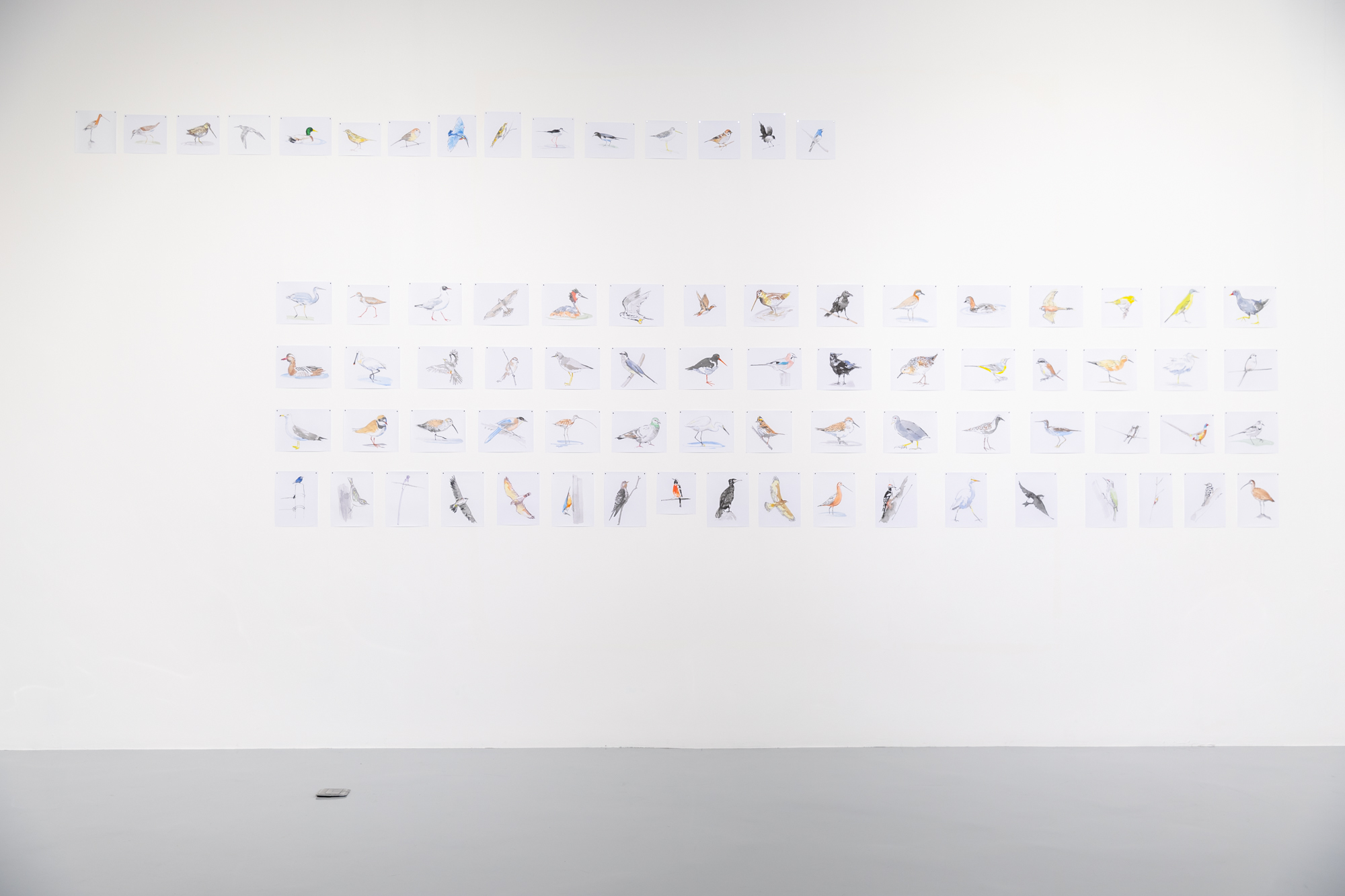Undo Planet
Part 1: October 25, 2025 – November 25, 2025 / Part 2: December 19, 2025 – February 22, 2026
BACC (Bangkok Art and Culture Centre)
Undo Planet
With each passing year, heat waves and cold snaps have been intensifying, while the effects of climate change have been perceivable within our daily lives. The rise in temperatures has led to a northward shift in forest distributions and vegetation belts; particular ecosystems, including forests, coral reefs, and polar regions, have been under direct threat. Maritime ecosystems have also been heavily affected, with changes in the paths traveled by fish, declining oxygen levels in the seas, and a rising incidence of disease. It is commonplace these days to see fish and shellfish collectively dying off. The reduction in glaciers has led to issues with deteriorating water quality and supplies in countries that face shortages of water. Changes in climate systems have also been affecting methods of food production, with increases in pest damage and intensifying contamination of soil and water quality. Droughts, floods, and stunted growth have dealt a serious blow across the industries of agriculture, forestry, and fishing. Low-lying coastal regions have been inundated by rising sea levels, coastlines have been retreating, and wetlands have frequently ended up submerged. Unusual climate phenomena such as heat waves, heavy rains, landslides, wildfires, and hurricanes have been happening with greater frequency and intensity, while tropical diseases such as malaria have been spreading, along with various other infectious diseases. In addition to the damage that climate change causes in terms of human lives and property, it also stands to exacerbate social and economic inequality. Vulnerable populations—including the poverty class, children, seniors, and indigenous peoples—are exposed to even greater risks. Rising sea levels, climate disasters, and shortages of potable water and food have worsened the survival conditions for humankind, leading ultimately to migration, conflict, and poverty.
The exhibition Undo Planet uses art as a medium to examine possibilities for restoring nature. The artists join in wrestling with the issue of global climate change, offering various attempts and suggestions as to how our crisis-stricken Earth might be restored. The word “undo” in the title carries the definition of “returning something to its previous state” as well as that of “opening up” or “unfastening.” “Undo planet” can thus be understood as meaning to “return the planet (Earth) to its original state” or “open up a closed planet.” The exhibition examines the nature and ecological environment found within the planet we live upon. Our Earth is made up of various components, including the land, the seas, flora, fauna, insects, and so forth. All these things are interconnected in organic ways. Yet these relationships have been severed within the anthropocentric categorization systems of the era since modernity. While it may not be possible to completely leave behind anthropocentric thought, this exhibition uses the perspectives of artists to examine environments that have been excluded and to reconnect the relationship between nature and human beings after its separation in the process of modernization. In this way, it seeks to explore a new way of coexistence with nature.
Undo Planet consists of two parts. The first of them centers on Korea’s Demilitarized Zone (DMZ), which was created in the wake of the armistice that suspended the Korean War. This section artistically approaches the history and environment associated with the DMZ region. Since the Korean War, which lasted from 1950 to 1953, the DMZ has covered an area extending 248 kilometers in total length and two kilometers to the north and south of the Military Demarcation Line (MDL). Human access there has been restricted for around seven decades, establishing it as a setting where nature has been capable of restoring itself. “Undo DMZ,” which continues from October 25 to November 25, 2025, is the exhibition’s first part, which artistically explores the DMZ’s ecological environment. The second part, “Land Art and Non-Human Beings,” looks at ecosystems and the global environment from a broader perspective and will run from December 19, 2025 to February 22, 2026. Where “Undo DMZ” centers on a specific region in Korea’s DMZ, “Land Art and Non-Human Beings” focuses on plant and animal life and other non-human presences, encompassing works of land art from the 1960s and 1970s to more recent years.
This exhibition was supported by the Korean Ministry of Culture, Sports and Tourism, and Korean Foundation for International Cultural Exchange (KOFICE) as part of “Touring K-Arts” project.








